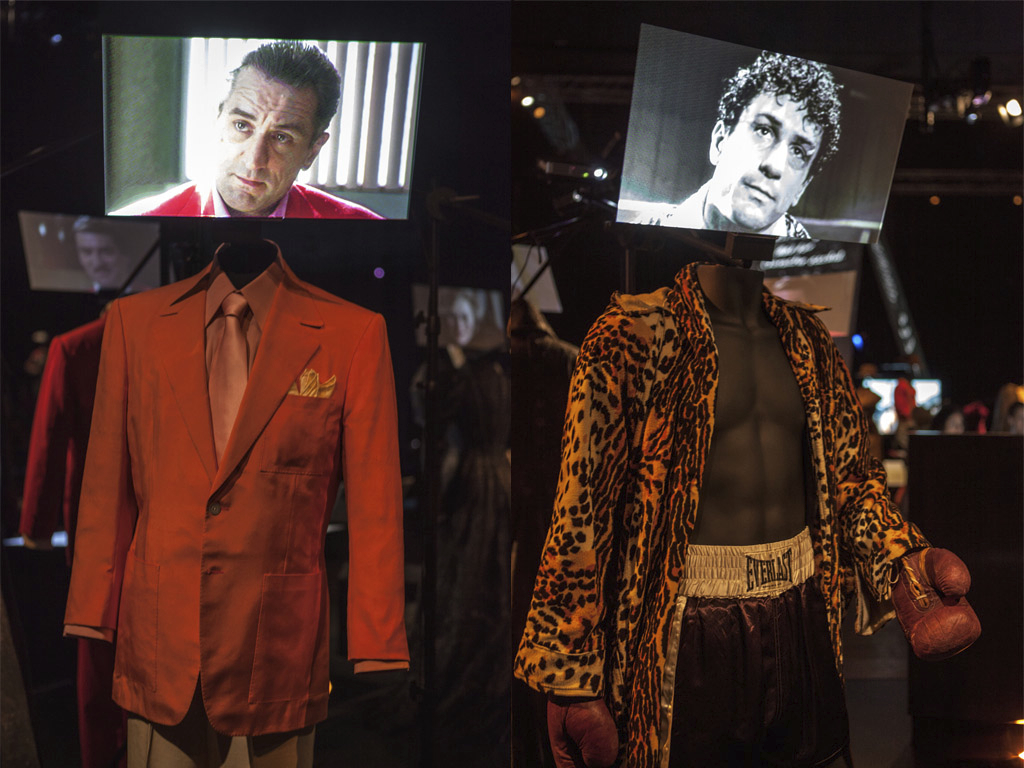









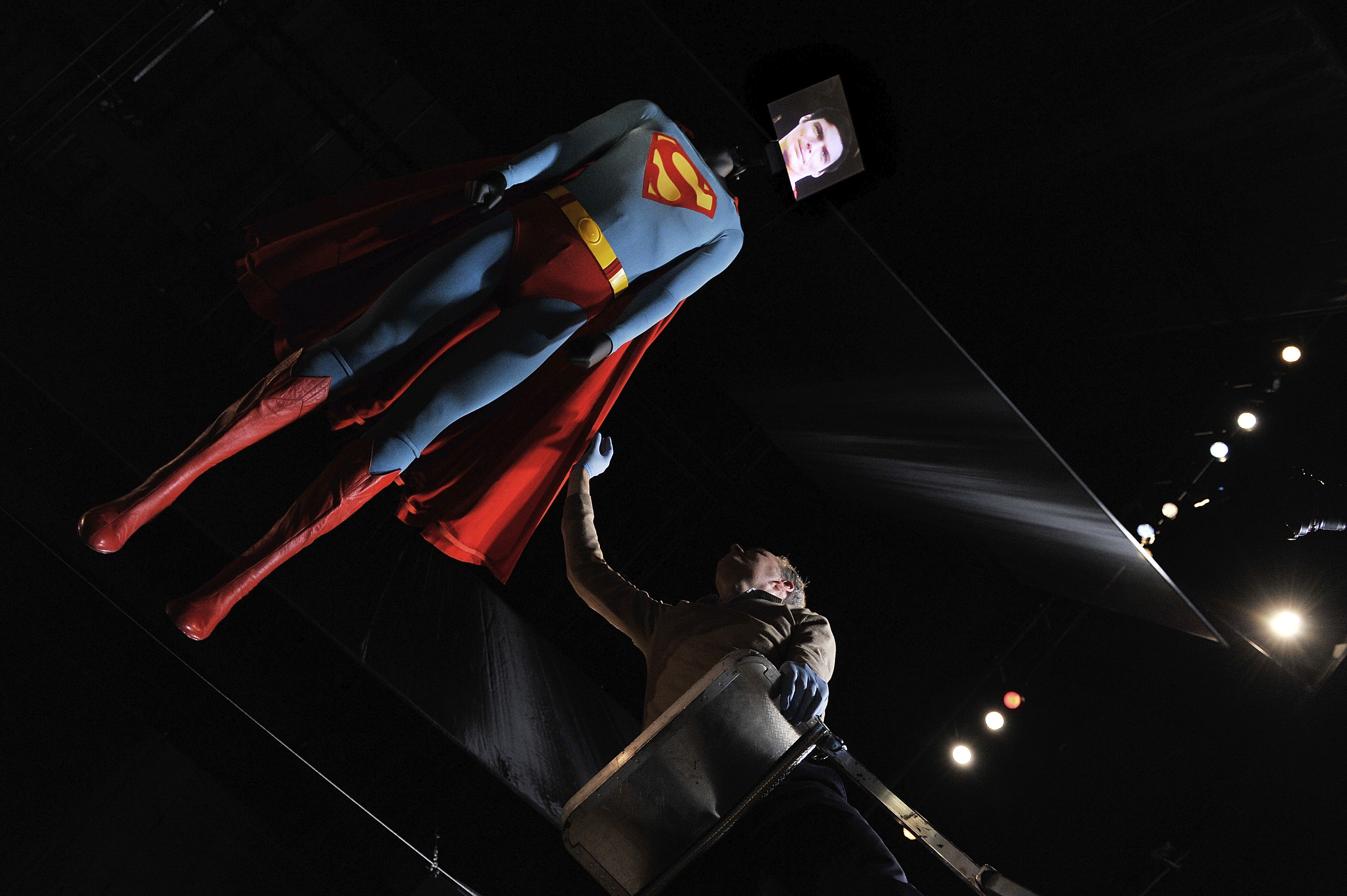




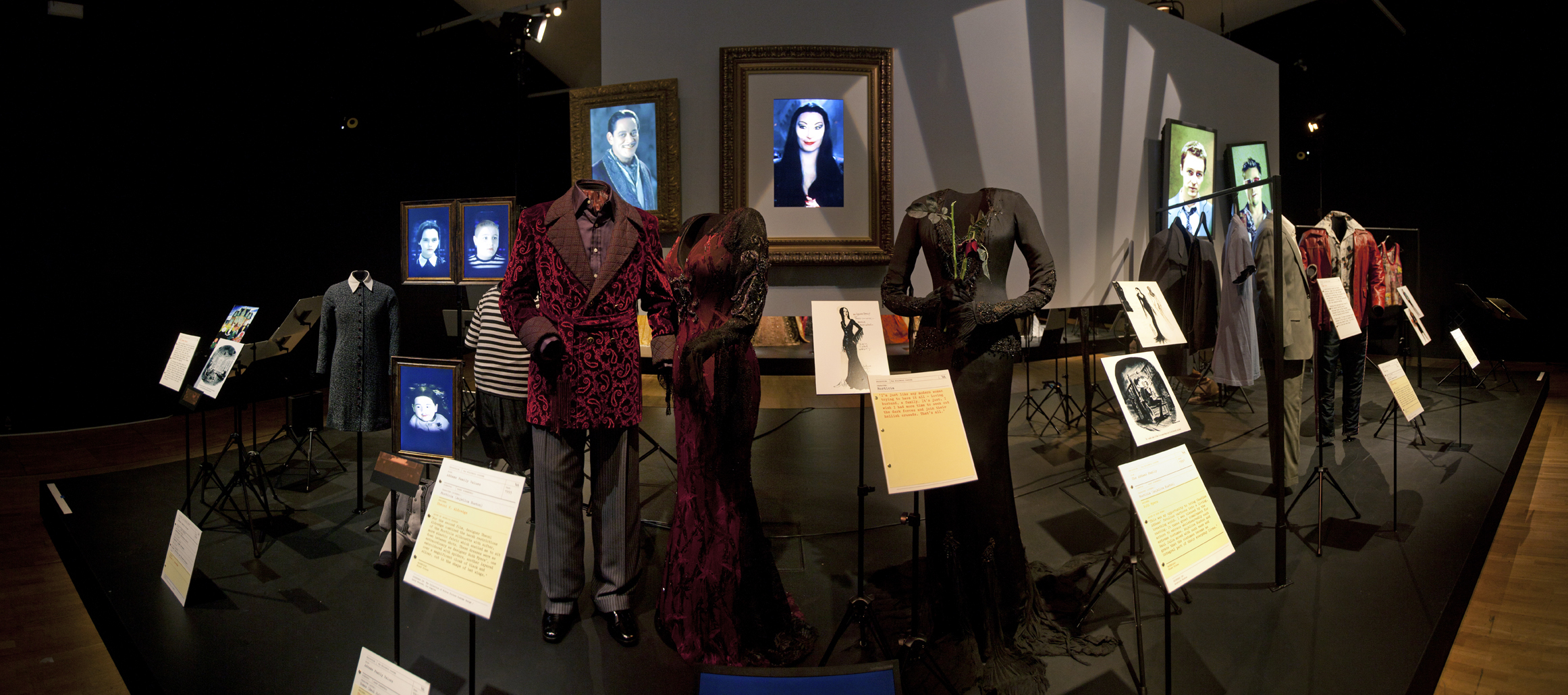
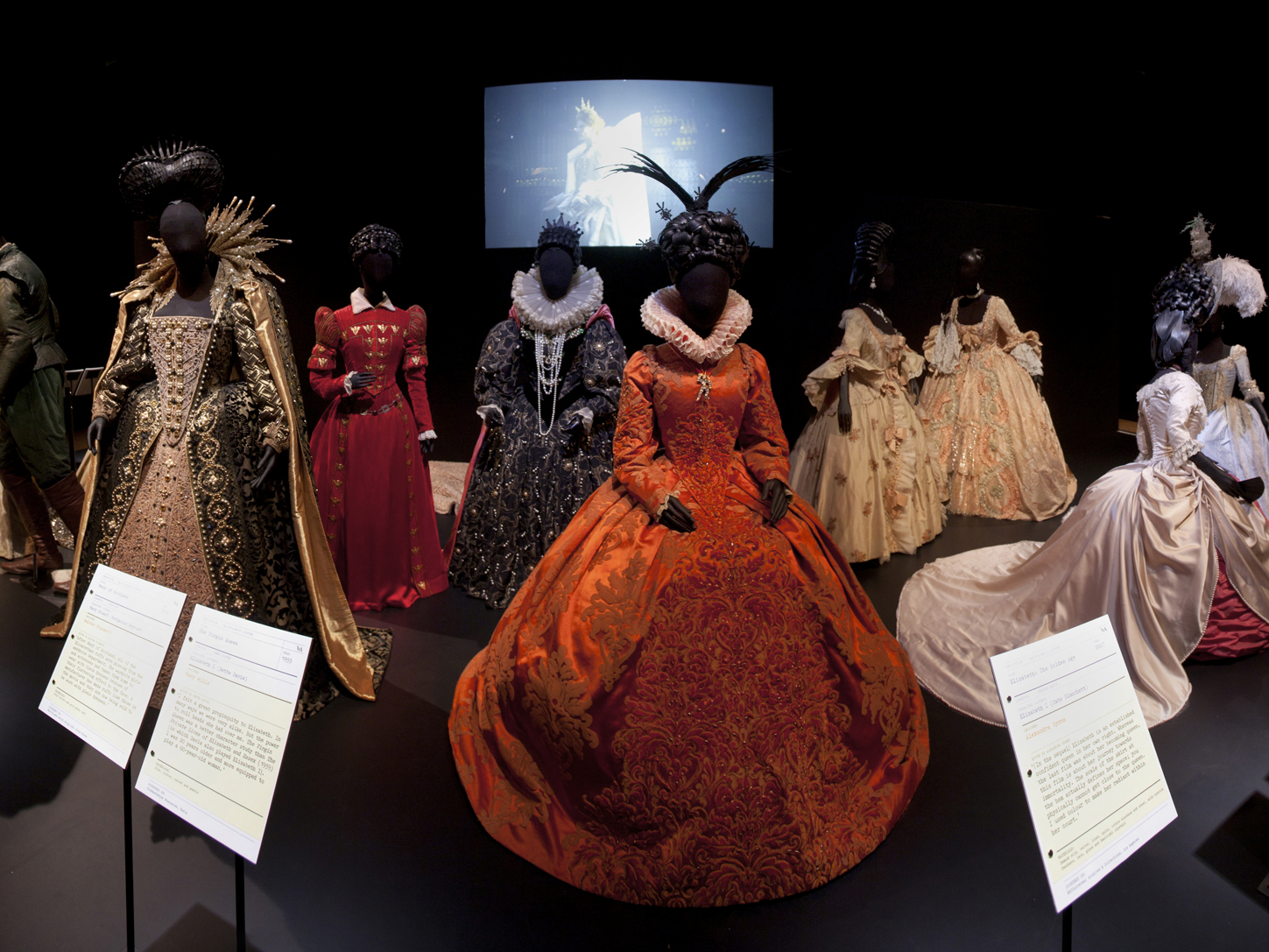














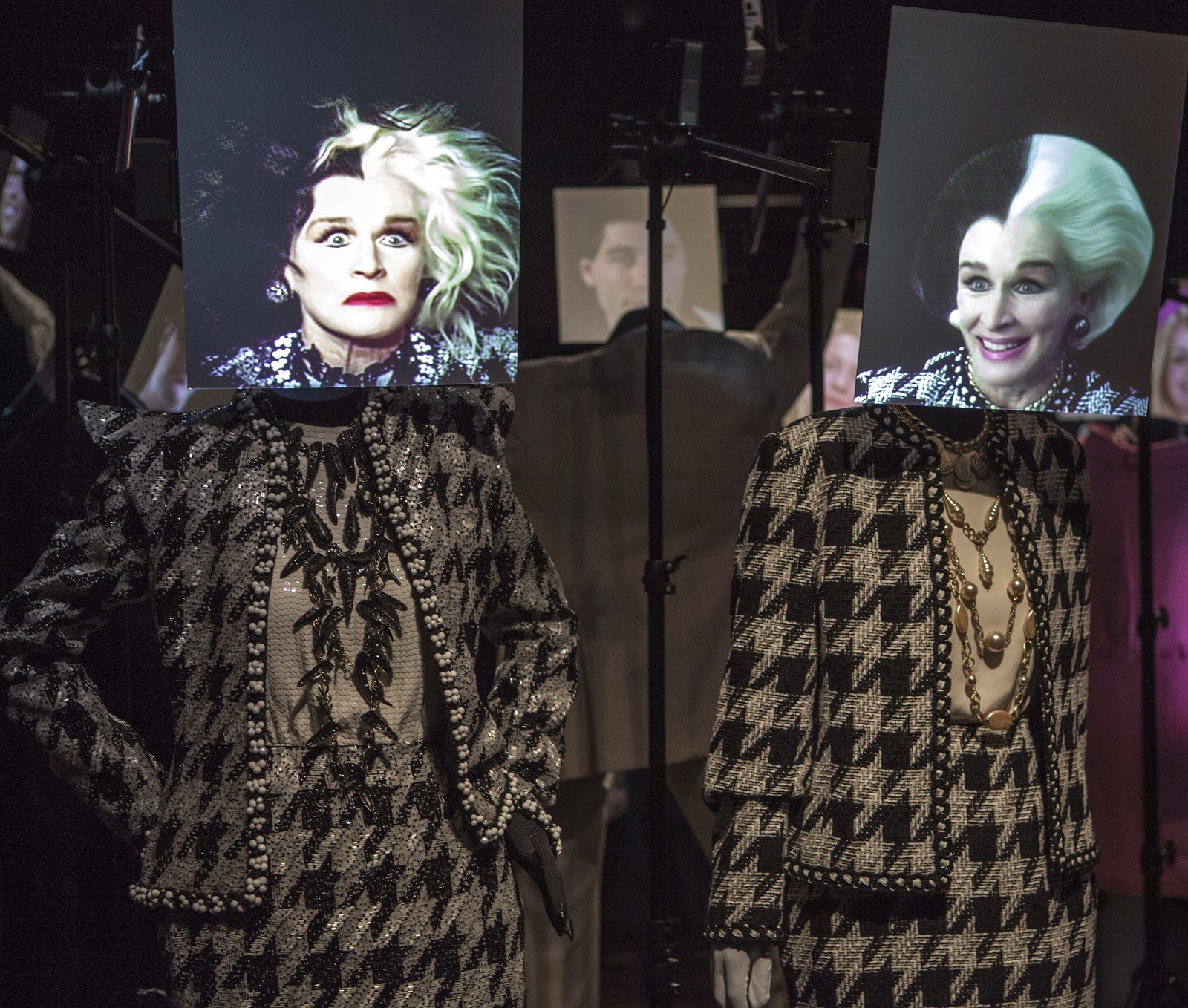
“On every film, the clothes are half the battle in creating the character. I have a great deal of opinion about how my people are presented. We show a great deal by what we put on our bodies.”
Meryl Streep
“I don’t dress movie stars. I dress actors who are playing characters.”
Ann Roth, Academy Award-winning costume designer
Hollywood Costume, the V&A’s major autumn exhibition, gathers together over 130 of the most iconic costumes designed for unforgettable cinema characters over a century of film- making. For the first time, Hollywood Costume unites classics from the Golden Age including Dorothy’s blue and white gingham pinafore dress designed by Adrian for The Wizard of Oz (1939), Scarlett O’Hara’s green ‘curtain’ dress designed by Walter Plunkett for Gone with the Wind (1939) and the ‘little black dress’ designed by Hubert De Givenchy for Holly Golightly in Breakfast at Tiffany’s (1961), with the latest Hollywood releases including Consolata Boyle’s costumes for Meryl Streep in The Iron Lady (2011) and Jacqueline Durran’s costumes for Anna Karenina (2012).
Hollywood Costume explores the central role of costume design – from the glamorous to the very subtle – as an essential tool of cinema storytelling. It illuminates the costume designer’s creative process from script to screen and reveals the collaborative dialogue that leads to the invention of authentic people within the story. The exhibition also examines the changing social and technological context in which costume designers have worked over the last century.
The exhibition is a three-gallery journey from early Charlie Chaplin silent pictures to the motion capture costume design for Avatar (Deborah L. Scott, Mayes C. Rubeo, 2010). From Joan Crawford’s blue gingham waitress uniform in Mildred Pierce, (Milo Anderson, 1945) and the sensational bugle-beaded ruby gown she wore in The Bride Wore Red, (Adrian, 1937) to the unforgettable white 3-piece suit worn by John Travolta as Tony Manero in Saturday Night Fever (Patrizia Von Brandenstein, 1977) these costumes are united by their one purpose of serving the story. Using montages, film clips and projections, the clothes are placed in their
original context, alongside interviews with key Hollywood costume designers, directors and actors talking about the role costume plays in creating a character.
Deborah Nadoolman Landis, Hollywood costume designer and senior guest curator, said: “This landmark exhibition provides a once in a life-time opportunity to explore the most beloved characters in Hollywood history and gain insight on the role of the costume designer and their vital contribution to cinema storytelling.”
Sir Christopher Frayling, guest curator, said: “The design of costumes for films is a distinctive form of design which is often taken for granted or misunderstood. This V&A exhibition presents the ideal opportunity to set the record straight – and does so in the most spectacular way.”
The exhibition has involved sourcing, identifying and securing objects from all across the world over the course of five years. The collectors who have loaned to the exhibition range from major motion picture studios, costume houses, public museums and archives and private individuals.
Exhibition Structure
The exhibition is divided into three sections to tell the story of costume design.
Act One: Deconstruction introduces the role of the costume designer in cinema. This section explores the link between clothing and identity and looks at how designers create the unique individuals in the script whether for modern, period or fantasy films. There are clothes instantly recognisable as being ‘costumes’ such as the imperial robes designed by James Acheson for The Last Emperor (1987) alongside others like Brokeback Mountain (2005), where Marit Allen’s designs for Jack Twist (Jake Gyllenhaal) and Ennis Del Mar (Heath Ledger) may seem invisible. The steps of the costume designer’s research process are explored in case studies that include Fight Club (Michael Kaplan, 1999), Addams Family Values (Theoni V. Aldrege, 1993), and Indiana Jones: Raiders of the Lost Ark, (Deborah Nadoolman, 1981). The process is revealed using designs and sketches, photographs showing costume fittings, budget breakdowns and script pages to show dialogue that discloses character defining clues. The first act concludes with a dissection of designer Alexandra Byrne’s Elizabeth: The Golden Age (2007) surrounded by a royal court of characters that includes the celebrated The Virgin Queen (Charles LeMaire, Mary Wills, 1955) played by Bette Davis.
Act Two: Dialogue examines the intimate creative collaboration among great filmmakers, actors, and costume designers. Using archival film footage as well as specially-commissioned interviews, Dialogue explores four key director/designer pairings: Alfred Hitchcock and Edith Head who worked together on 11 films including The Birds (1963); Tim Burton and Colleen Atwood whose nine films together have spanned Edward Scissorhands (1990) to Alice in Wonderland (2010); Martin Scorsese and Sandy Powell who have teamed on films from Gangs
of New York (2002) to the recent Hugo (2011); and Mike Nichols and Ann Roth who have worked together for almost 30 years from Silkwood (1983) to Closer (2004).
Costume designers have worked within a rapidly changing social and technological landscape over the last century: from silent to sound, black and white to Technicolor and from the Golden Age studio system to multi-national corporations and art house ‘indies’. Censorship, remakes and genre are deconstructed in a section devoted to historic and social context. Cleopatra (1934) designed by Travis Banton stands alongside the 1963 interpretation by Irene Sharaff starring Elizabeth Taylor. Thoroughly researched by the designers, the look of each Cleopatra is ultimately defined by the fashions of its own era. Archetypal cinematic genres are explored with sword and sandal epics such as Ben Hur (Elizabeth Haffenden, 1959), Westerns including True Grit (Mary Zophres, 2010), fantasy films such as Star Wars Episode IV: A New Hope (John Mollo, 1977) and period drama like A Room with a View (John Bright, Jenny Beavan, 1985). It shows how costume designers have embraced the innovations in technology and animation, such as Joanna Johnston’s design for Jessica Rabbit in Who Framed Roger Rabbit (1988), computer generated imaging (CGI) and motion-capture (mo-cap), exemplified by characters from Avatar (Deborah L. Scott, Mayes C. Rubeo 2009).
Dialogue concludes with the ‘Art of Becoming;’ two case-studies on the award-winning actors Robert De Niro and Meryl Streep. In specially commissioned interviews, both actors, celebrated for their transformative skills, discuss the importance of costume in developing and playing a range of their characters. Five costumes from each of their most famous roles are on view.
The final section, Act Three: Finale presents the best known costumes in cinema history in a spectacle of Hollywood heroes and femme fatales. Some of the most glamorous sirens from Roxie Hart in Chicago (Colleen Atwood, 2002) to Catherine Tramell in Basic Instinct (Ellen Mirojnick, 1992) are seen alongside fantasy, sci-fi and superhero characters including Bram Stoker’s Dracula (Eiko Ishioka, 1992), Twilight: New Moon (Tish Monaghan, 2009) and the latest high-tech suit for Batman in The Dark Knight Rises (Lindy Hemming, 2012). With costume designer Judianna Makovsky’s Gryffindor uniform design for Harry Potter to Errol Flynn’s doublet in The Adventures of Don Juan (Marjorie Best, 1948). Finale will feature the fêted white ivory cocktail dress worn by Marilyn Monroe as The Girl in The Seven Year Itch (William Travilla, 1955) and designer Jacqueline Durran’s unforgettable green silk charmeuse gown worn by Keira Knightley as Cecilia Tallis in Atonement (2007). These examples show the most memorable costumes, characters and stories that continue to inspire generations, fashion trends and enrich international popular culture.
If you are in London, It’s a Must!
Joelle’s Picks:
Hollywood Costume
Sponsored by Harry Winston
20 October 2012 – 27 January 2013
- For more information, visit www.vam.ac.uk/hollywoodcostume
- Hollywood Costume is curated by Hollywood costume designer and senior guestcurator Deborah Nadoolman Landis, guest curator Sir Christopher Frayling and V&Aassistant curator Keith Lodwick
- The exhibition has been designed by Casson Mann
- The Museum is open daily 10:00 – 17:45 and until 22:00 every FridayTicket InformationAdvance booking advised. Visit www.vam.ac.uk/hollywoodcostume or call 020 7907 7073 (booking fee applies). Tickets are £14 (concessions available)
